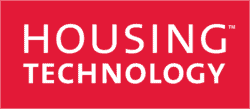Customer portals are evolving to support the fact that social housing is on a trajectory of rapid change, driven by greater regulatory scrutiny and a desire to deliver better social value. The new breed of portals automates data-quality improvements, thus improving services, reducing inefficiencies, liberating staff and supporting compliance.
Housing providers are expected to not only meet the Decent Homes Standard (DHS) but also self-report non-compliance. To do so, they need accurate and up-to-date knowledge of the state of their housing portfolios. That means a two-way flow of current and trusted data is essential.
Along similar lines, they must facilitate better reporting of any breaches of the Housing Health and Safety Rating System (HHSRS) that contribute to failure to be DHS compliant. That means tenants need to be able to report potential hazards, and housing providers must be able to action these reports in a timely and cost-effective manner.
Data is everything
Ultimately, knowledge of the condition of their homes and the quality of data at their fingertips are the predetermining factors for the standard of service that housing providers offer and their compliance with new legislation and governance principles.
Bi-directional portals sit at the heart of a designed-for-purpose digital transformation solution aimed at solving the data dilemma. The first step is to bring tenants online via a mobile-first portal registration and login process. The more tenants with whom the housing provider can engage digitally, the better. In effect, they are crowd-sourcing data from the people best equipped to provide it – the residents themselves.
The tenants use the portals to update personal information, correct inaccurate data, report problems and schedule site visits. This also helps the housing provider because their staff can arrive at the home at a time when they know the resident is around, eliminating wasted visits.
The portal allows the housing provider to gather clean data about their homes and tenants, with back-office integration writing that data to their back-office applications. This will trigger workflows, flags, escalations and more, now that these systems have the data they need to do their jobs, automatically.
Housing providers can also introduce business process automation (BPA), with a portal being the key initial enabler. They can remove people and the manual handling of data from their processes, and speed up processes such as repairs and audits while taking costs out of the organisation.
One example of portal development is the work being done at Westwood Homes by VerseOne, utilising 3C Consultants’ Data Logic solution to identify areas where data is missing, incomplete or possibly inaccurate. The portal automates the process of onboarding the tenant digitally and updating the records. AI and crowd-sourcing are combined to enable rapid data collection and process automation drives faster resolutions.
Greater automation
Automation is crucial for housing providers at a time when they all face reductions in their net income due to inflation increasing their costs and rent caps suppressing revenues; BPA and tenant self-service means they can do more with less.
Digital tenant engagement means that the residents can serve themselves, freeing up customer-service teams to provide care and support to the tenants who truly need it. That way housing providers can focus their staff on working with residents while the portal and systems combine to automate the routine tasks. This also helps with TSM ratings and leads to happier employees.
Finally, tenants feel that they have a greater sense of ownership of their home and its condition. They can interact with their housing provider and stay up-to-date with progress, at any time, without the hassle of being stuck in a call-centre queue.
It’s a true win-win-win scenario. The tenant wins because they have the means to control their own destiny. The housing provider wins because they can provide a higher standard of service. And the regulator and ombudsman win because compliance is evident for all to see.
Wider use of portals
Tenants are only the first potential users of a portal. Housing staff, particularly those working in the field, can benefit from the same remote and centralised access to data. They can complete jobs, flag problems and recommend preventative maintenance or hardware replacements, helping the housing provider stay ahead of DHS obligations.
In the future, intelligent devices (as part of an IoT approach) will also be ‘users’ of digital portals. Connected devices and smart sensors, along with AI and process automation, will transform the way problems are reported, diagnosed and fixed.
We believe that the social housing sector should unite around the target of having 80 per cent of tenants digitally-enabled by 2026.
The ultimate journey is long and transformational, but the first step is a portal that helps you to improve data quality, thus improving services and compliance, while allowing those who want to self-serve to do so, freeing housing staff to look after those who really need help.
Campbell Williams is the CMO at VerseOne

